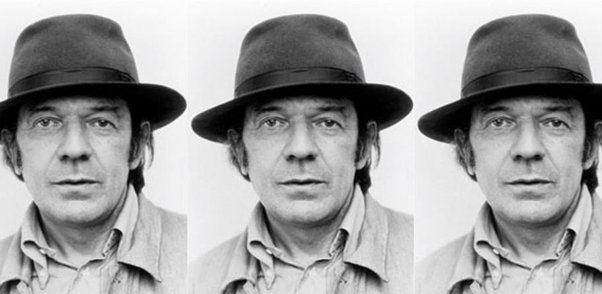In thinking about any aspect of Deleuze’s work it’s helpful to keep in mind his overall motivation: he aspired to a fully naturalistic and materialist metaphysics, one that would adequately embody the modern scientific worldview and extend it to the entire field of human action. He seems to have believed that this required that normative concepts (ideas about how things ought to be, such as justice and morality) be completely purged from accounts of human phenomena. To accomplish this, Deleuze re-described political, economic, psychological, linguistic, and moral phenomena in terms and concepts taken from physics, chemistry, the earth sciences, and dynamics (especially self-assembly, self-organization, and chaos theory).
Many philosophers are naturalists of one sort or another, but most don’t want to simply do away with normative concepts. Instead the idea is to find ways of understanding the normative world (the world of reasons) that are consistent with the naturalistic explanations of science (the world of causes), without abandoning the sense most of us have that human behavior cannot adequately be described without recourse to concepts of justification, responsibility, obligation, and the like. Deleuze dissented from this view in an especially relentless, uncompromising, and highly original and imaginative way.

Deleuze’s particular form of naturalism is based on the idea that the fundamental character of reality is differential. In traditional metaphysics, attempts are made to explain what we encounter in experience – a variety of different things, different kinds of things, and composite things – by understanding them as caused by or originating in some simpler thing that we don’t directly experience but which we can represent to ourselves in the form of concepts.
So we might understand objects of experience as particular instantiations of unchanging ideas (Plato), as possible modes of a single substance (Spinoza), or as obeying natural laws (Newton).
When we do this, we’re saying that the various different things we encounter are held together, as it were, by a pre-existing unity. Any given oak tree is a particular instance of the oak tree “template,” whether we regard that as the Platonic Idea of the oak tree or its essence or substance or in terms of a natural law. An oak must be an oak, and one oak is much like another. There’s variation, of course, but in principle each oak is doing its best to conform to the ideal oak.

In Deleuze’s metaphysics, objects aren’t individuated in terms of their correspondence to an idea or conformity with a law. Instead, they are ways in which purely differential elements have managed to assume, for a moment, the stable state of a system.
Deleuze’s picture of how this works is rich and complex, and I can’t do it justice here (or anywhere, really). But a sketch of it would probably single out three elements: the virtual (the state of sheer differentiation), the actual (the state of maximum binding or stasis) and what in A Thousand Plateaus (1980) Deleuze and Félix Guattari call the plane or zone of intensity (the dynamic form assumed by the things we encounter in experience, which are always tending towards the virtual and the actual at once).
The term “multiplicity” refers to the character of what Deleuze calls an “Idea,” which accounts for objects of experience as systems of differential elements organized in mutually determining relationships such that there are points at which the system as a whole can change, as when water freezes at 32 degrees Fahrenheit.

The concept of any individuated object or event may serve as an example of a multiplicity. An earthquake is a multiplicity consisting of the action of plates in the Earth’s crust, the formation of faults, the presence along them of surface irregularities causing friction, and the storage of energy where they are “locked.” These elements create forces each of which affects all the others and which determine the point at which the resistance of the fault and the amount of stored energy results in the release of the latter. This virtual earthquake allows us to account for real earthquakes as mutually self-organizing processes involving differential elements.
The concept of a multiplicity can assume the form of a political theory, as it does in Anti-Oedipus (1972) and A Thousand Plateaus. In the contemporary world, thanks to capitalism, the various “flows” of desire, production, and action are increasingly deregulated and freed, or “deterritorialized.” For that very reason, more and more effort is devoted to binding and systematizing them, “re-territorializing.”
Thus, an election is a multiplicity consisting of various “flows” such as nominees, voters, money, advertising, and ballots that are related to one another in such a way as to create a “phase shift” in the political system, exactly in the way that changes in friction and energy generate earthquakes and changes in temperature cause water to freeze. A revolution is a dynamic system of interest groups, power struggles, ideologies, and opportunities that determine a point where one government is replaced by another.
An individual, too, is a multiplicity. As Deleuze and Guattari put it in the introduction to A Thousand Plateaus: “The two of us wrote Anti-Oedipus together. Since each of us was several, there was already quite a crowd.”


